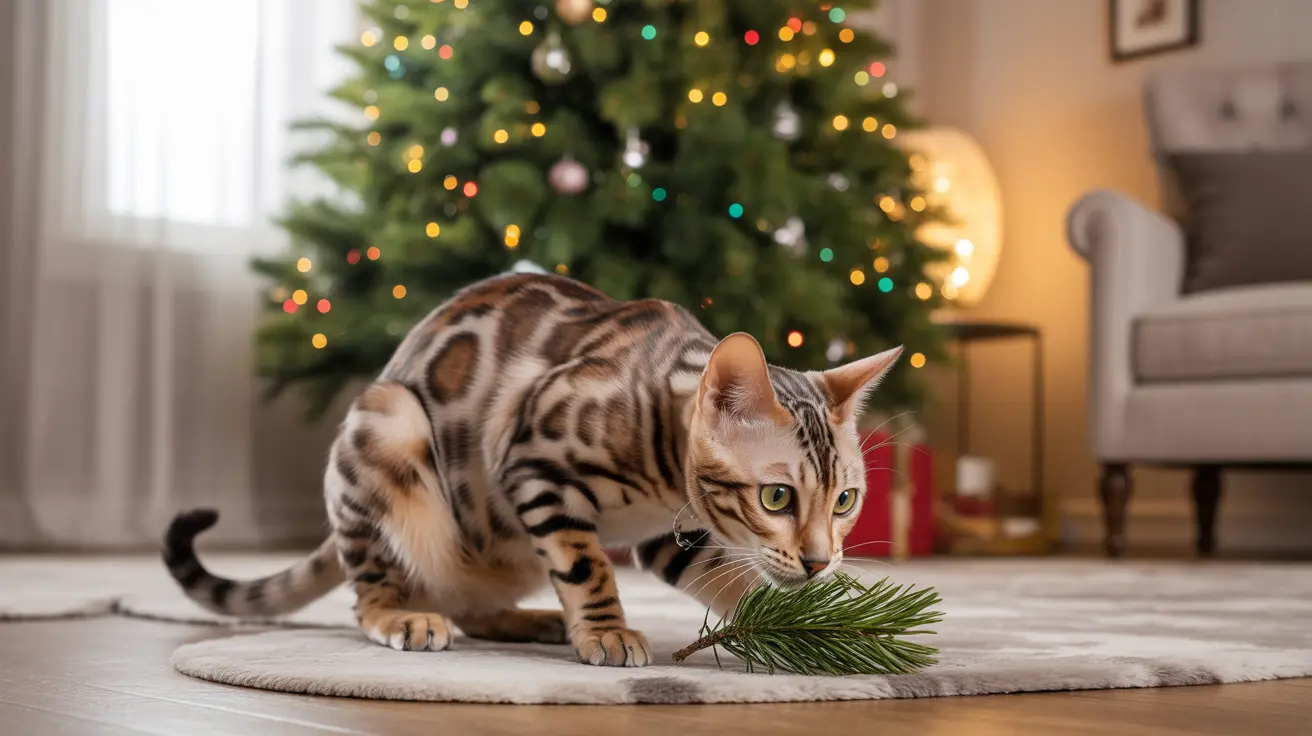The Dangers of Pine Needle Toxicity in Cats
Pine needles contain essential oils that are toxic to cats. Unlike humans, cats lack a specific liver enzyme called glucuronyl transferase, which makes it impossible for them to properly metabolize these oils. Even small amounts of pine oil can lead to liver damage and other serious health complications.
The toxicity isn't limited to ingestion - cats can also be affected by skin contact with pine needles or through inhaling pine oil vapors from diffusers or scented products. This makes pine trees and their needles particularly hazardous in enclosed home environments.
Physical Risks and Complications
Beyond toxicity, pine needles present significant physical dangers to cats. Their sharp, pointed structure can cause serious injuries to your cat's digestive system, including:
- Mouth and throat punctures
- Esophageal damage
- Stomach and intestinal perforations
- Gastrointestinal blockages
These physical injuries can occur even if your cat only plays with or briefly chews on pine needles, making prevention absolutely essential.
Recognizing Signs of Pine Needle Exposure
If your cat has encountered pine needles, watch for these warning signs:
- Excessive drooling
- Vomiting or retching
- Diarrhea
- Loss of appetite
- Lethargy or weakness
- Abdominal pain or discomfort
- Difficulty breathing
- Changes in behavior
Prevention and Safety Measures
To protect your cat from pine needle dangers:
- Choose artificial Christmas trees over real ones
- Keep outdoor cats away from pine trees
- Clean up fallen needles immediately
- Consider using pet barriers around Christmas trees
- Avoid pine-based essential oils and cleaning products
- Provide safe alternatives for curious cats to chew on
What to Do in Case of Emergency
If you suspect your cat has ingested pine needles or shows signs of pine needle exposure, take immediate action:
- Contact your veterinarian immediately
- Monitor your cat's behavior and symptoms
- Don't induce vomiting unless directed by a professional
- Keep any evidence of what was consumed
- Be prepared to seek emergency care if symptoms worsen
Frequently Asked Questions
Can cats safely eat pine needles, or are they toxic?
No, cats cannot safely eat pine needles. They are toxic due to essential oils and can cause severe physical injury to the digestive system.
What symptoms should I watch for if my cat eats pine needles?
Watch for vomiting, drooling, diarrhea, lethargy, loss of appetite, and signs of abdominal pain. In severe cases, you may notice breathing difficulties or jaundice.
How can pine needles physically harm my cat beyond toxicity?
Pine needles can puncture or scratch the digestive tract, cause choking, and create blockages in the intestines. Their sharp nature makes them particularly dangerous.
Which types of pine trees are most dangerous to cats?
All pine species are potentially dangerous, but Norfolk Island pine, Australian pine, and ponderosa pine are particularly toxic. Christmas tree varieties like Scotch and white pine also pose significant risks.
What should I do if I suspect my cat has ingested pine needles?
Contact your veterinarian or animal poison control immediately. Don't wait for symptoms to appear, as early intervention is crucial for successful treatment.
Remember, prevention is always better than treatment when it comes to protecting your cat from pine needle dangers. By being aware of these risks and taking appropriate precautions, you can ensure your feline friend stays safe and healthy.






